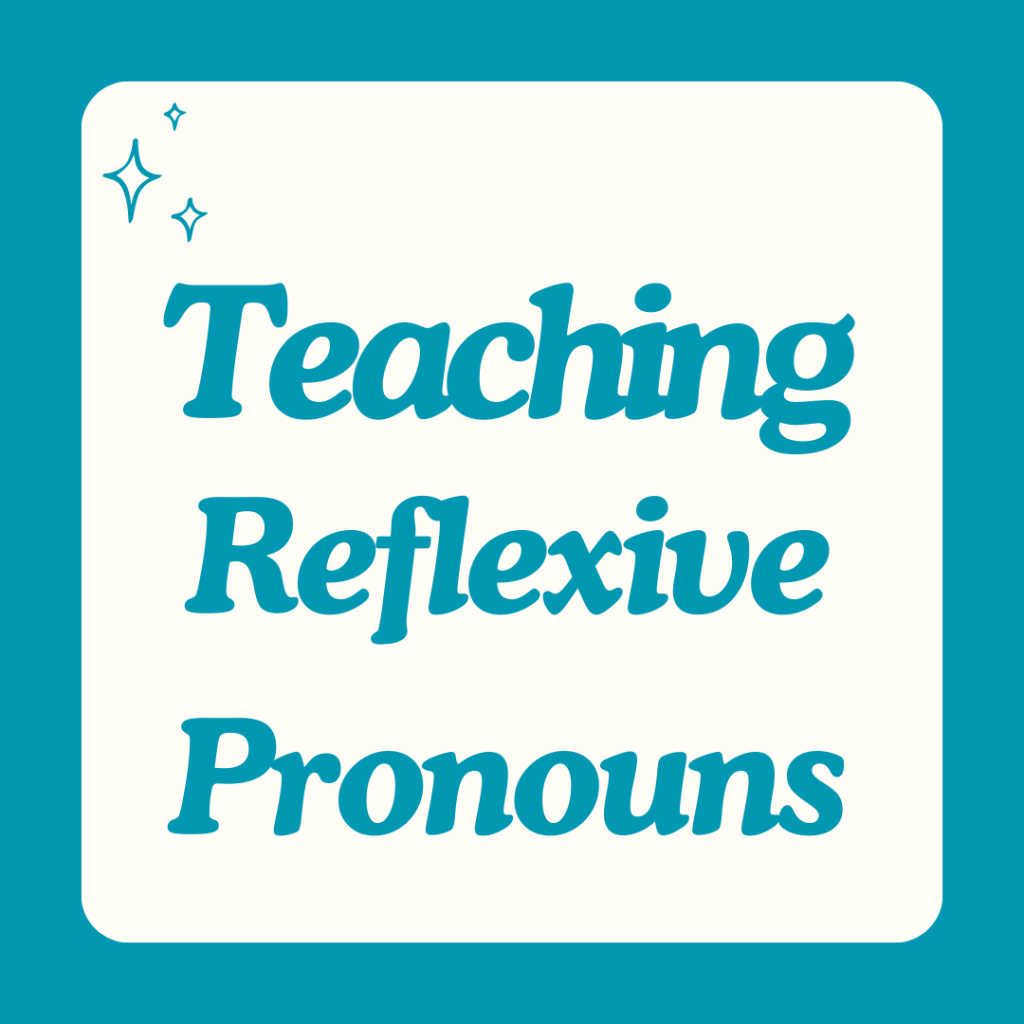
As teachers, we know that teaching reflexive pronouns is essential for young students to understand as they learn to express actions performed by and on themselves.
Here’s a simple guide on how to teach reflexive pronouns to elementary students, including strategies to accommodate English Language Learners (ELLs) and struggling students.
What are Reflexive Pronouns?
Reflexive pronouns are special words that we use when someone does something to themselves. For example, instead of saying “I cut me,” we say “I cut myself.” They help us talk about actions that someone does to themselves. Reflexive pronouns are:

🤸♀️ myself 🤸♀️ yourself 🤸♀️ himself 🤸♀️ herself 🤸♀️ oneself 🤸♀️ itself 🤸♀️ ourselves 🤸♀️ yourselves 🤸♀️ themselves
Start with Real-Life Examples
Begin by introducing reflexive pronouns through relatable scenarios and examples from everyday life. For instance, you could say, “When I get dressed in the morning, I dress myself.” or “When she fell off the bike, she picked herself up.” Encourage students to identify actions where the subject is also the object, doing something to themselves.
Teaching Reflexive Pronouns with Visual Aids and Actions
Visual aids, including Picture Cards, Vocabulary Word Cards, Game Cards, and Song/Chant, play a crucial role in reinforcing understanding, especially for English Language Learners (ELLs) and struggling students.

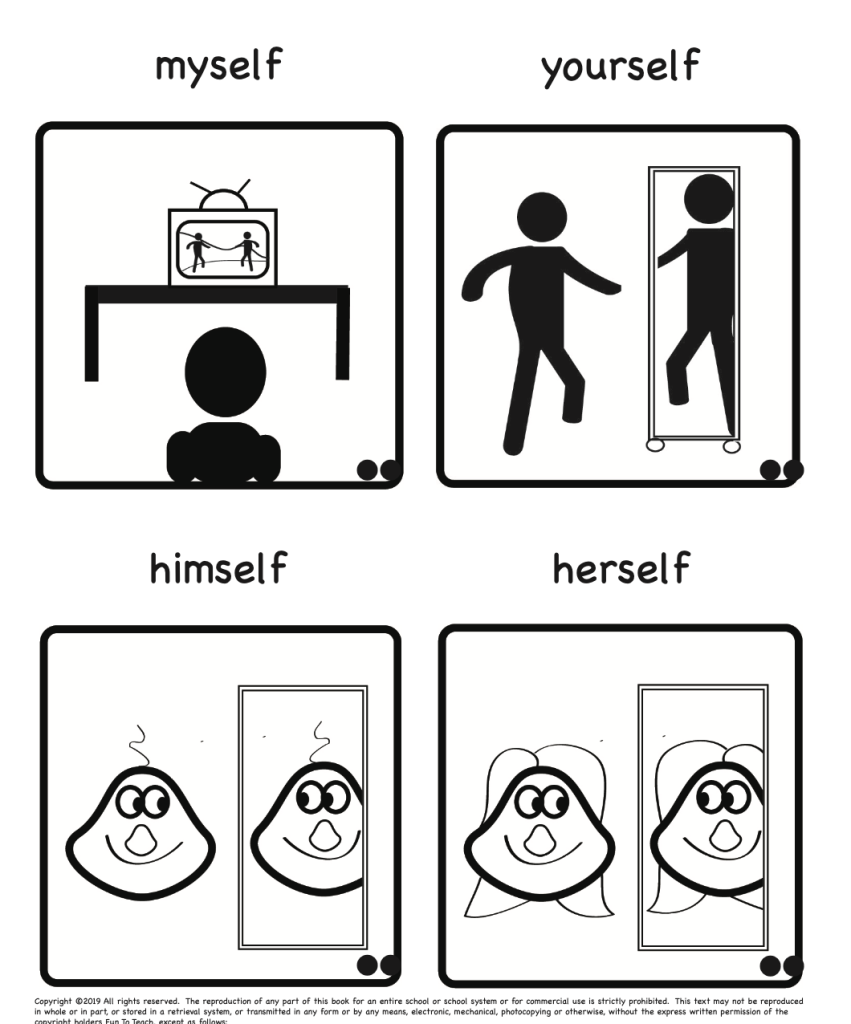
Picture Cards depicting actions of individuals doing something to themselves, such as brushing their own hair or washing their hands, provide clear visual representations to aid comprehension. Vocabulary Word Cards help reinforce the association between reflexive pronouns and their corresponding actions.
Game Cards offer interactive and engaging ways to practice using reflexive pronouns in sentences or identifying them within a context. For instance, teachers can use “Reflexive Pronoun Bingo” where students match sentences with reflexive pronouns to pictures or actions.
Additionally, incorporating a Song/Chant with catchy tunes and repetitive lyrics helps solidify learning in a fun and memorable way, appealing to auditory learners and enhancing retention for all students. By utilizing these diverse visual and interactive activities, teachers can create a dynamic and inclusive learning environment that caters to the diverse needs and learning styles of their students.
Use Scaffolded Learning
When teaching reflexive pronouns to struggling students, scaffold their learning by providing additional support and breaking tasks into manageable steps. Offer guided practice sessions and gradually release responsibility as students gain confidence. Provide plenty of opportunities for reinforcement and review to ensure retention.
By incorporating
- ✏️ engaging activities
- ✏️ visual aids
- ✏️ simplified explanations
- ✏️ scaffolded learning
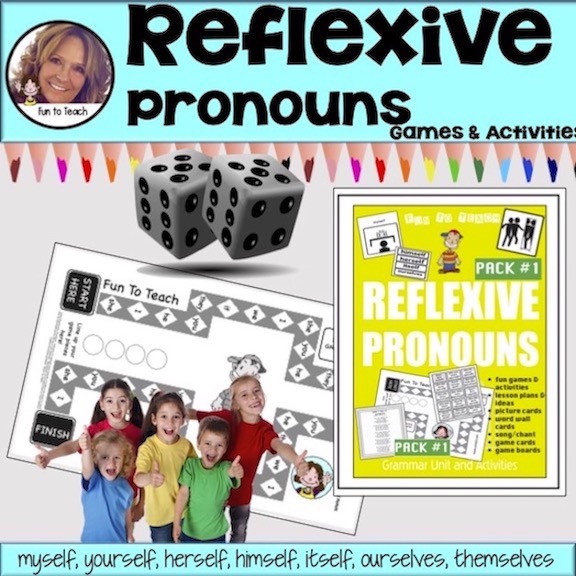
you can make the concept accessible to all learners, including ELLs and struggling students. Remember to provide plenty of opportunities for practice and reinforcement, and celebrate their progress along the way. With patience and creativity you can help your students master reflexive pronouns and improve their overall language skills.
Ready, Set, Go!
Let’s Teach!
Lori

Looking for time-saving tips and tricks for teaching math and ESL? Sign up for my email newsletter to get free teaching resources and helpful strategies right to your inbox! Click here to sign up.
Don’t miss this chance to get organized and get prepared for the rest of the school year.
Click the picture below to check out this ESL Year-long Curriculum Bundle and save yourself some time:

Grab your bundle here and get ready for a great rest of your school year!
Happy Teaching!
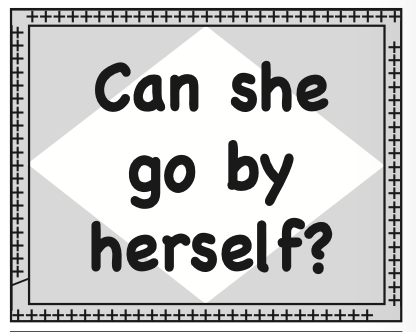

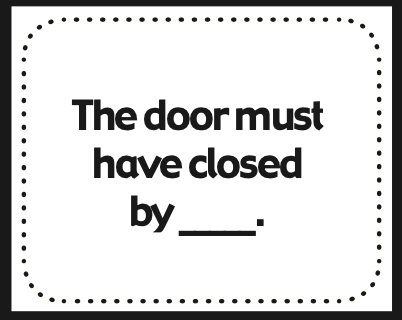
No comments:
Post a Comment